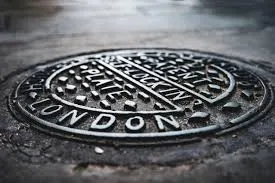Effective Solutions to Stop Water Leaks from Damaged Pipes
How to Use Clamps to Fix a Leaking Pipe
Dealing with a leaking pipe can be a daunting task for homeowners, but using a clamp can be an efficient and cost-effective solution to temporarily fix the issue. If you're facing a leaking pipe, whether it's in your plumbing system, garden irrigation, or any other water system, understanding how to use a clamp can save you time and money while providing a short-term fix until a permanent solution can be implemented.
Understanding the Problem
Pipes can leak for various reasons, including corrosion, wear and tear, sudden temperature changes, or physical damage. Identifying the source of the leak is crucial because it helps determine whether a clamp can effectively address the issue. While clamps can be a viable short-term fix, it is essential to monitor the leak and plan for a more permanent repair.
Choosing the Right Clamp
Before you begin the repair, you'll need to select the appropriate type of clamp for your specific pipe situation. Here are some common types of clamps used for fixing leaks
1. Pipe Repair Clamps These are designed specifically for emergency repairs. They come in various sizes and are fitted with rubber pads that conform to the pipe's shape. This ensures a snug fit, helping to prevent further leakage.
2. Hose Clamps While primarily used in automotive and plumbing applications, these can also work in a pinch for small leaks. However, they are generally better suited for smaller pipes or tubing.
3. C-clamps Although not specifically designed for plumbing, C-clamps can provide pressure to hold two surfaces together, making them a viable option for certain types of leaks.
4. Metal or Plastic Clamps Depending on the materials of your pipes, select suitable clamps that won’t corrode or degrade. Metal clamps may be appropriate for metal pipes, while plastic clamps can be used for PVC pipes.
clamp to fix leaking pipe

Steps to Fix the Leak
1. Turn Off the Water Supply Before doing any repairs, ensure that the water supply to the affected area is turned off. This will help prevent any water from flowing while you’re trying to fix the leak.
2. Clean the Area Dry off the leaking area using a towel or cloth. This will help the clamp form a better seal. If the pipe is corroded or dirty, consider cleaning it with sandpaper or a wire brush.
3. Choose the Right Clamp Size Measure the diameter of your pipe to ensure you select a clamp that fits snugly. Using a clamp that’s too small or large might not effectively seal the leak.
4. Position the Clamp Place the clamp directly over the leak, ensuring that the rubber pad (if applicable) is properly aligned.
5. Tighten the Clamp Use a screwdriver or wrench to tighten the clamp securely. Be careful not to overtighten, as this could damage the pipe. You want a tight seal that will withstand the pressure of the water flow without causing additional harm.
6. Test the Repair Once the clamp is secured, slowly turn the water supply back on and check for any remaining leaks. Observe the repair closely for the next few hours to ensure the clamp maintains its seal.
Conclusion
Using a clamp to fix a leaking pipe can be a simple, effective short-term solution. However, it’s crucial to remember that this is not a permanent fix. Always plan to have a professional come in for a more comprehensive repair. Regular maintenance and inspections of your plumbing can prevent leaks before they start, saving you time, money, and stress in the long run. When in doubt, or if the leak persists, always consult a plumbing expert to address more significant issues.
-
The Smarter Choice for Pedestrian AreasNewsJun.30,2025
-
The Gold Standard in Round Drain CoversNewsJun.30,2025
-
The Gold Standard in Manhole Cover SystemsNewsJun.30,2025
-
Superior Drainage Solutions with Premium Gully GratesNewsJun.30,2025
-
Superior Drainage Solutions for Global InfrastructureNewsJun.30,2025
-
Square Manhole Solutions for Modern InfrastructureNewsJun.30,2025
-
Premium Manhole Covers for Modern InfrastructureNewsJun.30,2025
